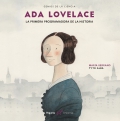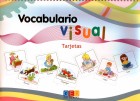Métodos de enseñanza y nivel de competencia bilingüe castellano-lengua de signos peruana en adultos. (Parte XXIII)

2. Audición: Capacidad de percibir a través del oído los cambios físicos que ocurren en el ambiente al propagarse el sonido. Sentido especial que permite la percepción del sonido. Es la función más importante que realiza el oído.
3. Audiometría: Medida de la audición realizada mediante audiómetros eléctricos.Comprobación de la agudeza auditiva.
4. Audífono: Prótesis auditiva. Aparato para aumentar el nivel del sonido para que sea percibido por el oído sordo. Puede ser retroarticular (aislado colocado en la patilla de un lente) y convencional (situado a distancia unido por un cordón. Dispositivo electrónico que amplifica el sonido en las personas con deterioro de la audición.
5. Caracol: Cavidad ósea con dos vueltas y media de espira en que se localiza el Órgano de Corti, el cual transforma la onda sonora en impulso nervioso.
6. Coeficiente intelectual: Cifra obtenida por pruebas psicológicas que expresa el grado de inteligencia de una persona. Expresión numérica del nivel intelectual de una persona, medida en comparación con la media estadística de su grupo de edad.
7. Comunicación Total: Teoría que subraya el derecho del maestro y del niño sordo a usar todas las formas disponibles de comunicación para desarrollar para desarrollar un banco de conceptos y lenguaje. Estas formas incluyen el lenguaje gestual natural ideado por el niño, la rehabilitación auditiva, la dactilología, la palabra, la lectura labial, la mímica formal.
8. Congénito: En sentido general, que aparece en el momento de nacer. Presente al momento del nacimiento como un defecto o anomalía congénita.
9. Cromosoma: Constituyente del núcleo de la célula en el que reside la información genética. Cada una de las estructuras filiformes del núcleo de una célula que participa en la transmisión de la información genética.
10. Diplacusia: Cambios en la calidad de la audición de cada oído.
11. Franceschetti, Síndrome de: Malformación congénita caracterizada por trastornos del desarrollo de los primeros arcos braquiales, lo que se manifiesta en forma de hipo o aplasia de la oreja, conducto, huesecillos, mandíbula, etc.
12. Generativismo: Movimiento lingüístico desarrollado hacia 1960 en los Estados Unidos sobre todo alrededor de Noam Chomsky y sus seguidores y matrerializado como teoría de las llamadas gramáticas generativas o generativo-transformacionales. El generativismo se configura como una serie de premisas que a menudo empiezan de la polémica contra el conductismo lingüístico y propugna el carácter creativo de la lengua. Asume que hay una predisposición innata para la adquisición y el uso de la lengua (innatismo) y se inscribe en el mentalismo.
13. Genético: Perteneciente o relativo a la Genética. Perteneciente o relativo a la génesis de las cosas. (Diccionario RAE)
14. Genética: Parte de la Biología que trata de la herencia y de lo relacionado con ella. (Diccionario RAE)
15) Hipoacusia: Disminución de la audición, que, en sentido estricto, no llega a ser total lo que se denomina clínicamente con el término de cofosis. Disminución de la sensibilidad a los sonidos. Puede tener un carácter conductivo o neurosensorial.
16) Lectura labial: (labiolectura, lectura labiofacial, orolectura, lectura psicovisual, logolectura o lectura oral). Se refiere a la obtención de información del mensaje oral a través del uso del sentido de la vista.
17) Lenguas de señas: Sistemas de comunicación usados por los sordos. Son sistemas de comunicación visual, no oral. A través de los signos, se puede expresar cualquier idea y lograrse una comunicación eficiente. El empleo de las mismas es reclamado por la comunidad sorda mundial desde hace más de treinta años.
18) Lengua de señas peruana: Sistema comunicativo usado por las personas sordas del Perú.
19) Oído: Órgano encargado de la audición que capta las ondas vibratorias del sonido que se propagan por el aire, las concentra, transmite y convierte en impulsos nerviosos que van al cerebro. Anatómicamente, se divide en tres partes: oído externo (pabellón auricular y conducto auditivo externo), oído medio (caja del tímpano, elementos incluidos en ella y cavidades mastoideas), y oído interno (caracol, vestíbulo y canales semicirculares) que está encargado de la transformación de la onda sonora y de detectar los cambios de posición de la cabeza respectivamente.
20) Oralismo: Método comunicativo artificial. Su propósito es proveer al niño de una herramienta comunicativa que le permita convertirse en una persona adaptada y productiva tanto crítica como económicamente en una sociedad mayoritariamente fuera del contexto único de los sordos.
21) Ototóxicos: Sustancias capaces de lesionar químicamente a los elementos sensoriales y nerviosos del oído interno. El que ejerce un efecto perjudicial sobre el octavo par craneal o sobre los órganos auditivos y del equilibrio. Entre los fármacos ototóxicos habituales se incluyen los aminoglucósidos, la aspirina, la furosemida y la quinina.
22) Postlocutiva: Sordera aparecida después de la aparición del lenguaje.
23) Potenciales evocados: Recogida a nivel del cuero cabelludo de los cambios inducidos por el sonido en las ondas del electroencefalograma (ERA). Si se recogen los cambios eléctricos a nivel del bulbo, se denomina BERA.
24) Potenciales evocados auditivos del tronco del encéfalo: Actividad eléctrica que puede registrarse durante los primeros diez milisegundos después de la presentación del estímulo auditivo. Un patrón de ondas de forma normal pero retrasado que puede indicar la pérdida auditiva provocada por un proceso morboso del oído medio o interno mientras que la ausencia de uno o más picos puede indicar una lesión neural.
25) Rehabilitación: Consiste en los medios necesarios para poner en funcionamiento algo (un órgano, una parte del cuerpo) que no realiza su función por defecto o por enfermedad.
26) Restos auditivos: Respuestas para algunas frecuencias, generalmente las más graves, para intensidades muy elevadas, que se obtiene de la prueba de audiometría.
27) Sordera: Disminución o falta del sentido del oído. Proceso caracterizado por la pérdida de la audición, parcial o total. Al valorar la sordera, se examinan los oídos del paciente, buscando exudación, costras, grumos de cerumen o anomalías estructurales. Hay que determinar si la sordera es de conducción o sensorial, temporal o permanente y congénita o adquirida en la infancia, la adolescencia o la vida adulta. Se valora el efecto del envejecimiento, cuando corresponda, y se realiza una valoración psicosocial sobre la adaptación del individuo a su sordera y su posible reacción a la misma con miedo, ansiedad, frustración, depresión, ira u hostilidad. En todos los casos hay que determinar el grado de pérdida sensorial y el tipo de alteración que la ha producido.
28) Sordomudo: Término que indica a la persona que ni oye ni habla. Hoy en día se evita su uso ya que supone una impropiedad, ya que de hecho, los órganos fonatorios son completamente normales. Si no se habla es por falta de modelos auditivos que imitar. Persona que no puede oír ni hablar debido a discapacidad del cerebro o de los órganos de la audición y el lenguaje.
29) Universales del lenguaje: Se llaman universales del lenguaje las semejanzas en las que coinciden todas las lenguas del mundo. Algunos universales entran en el dominio de la psicolingüística, ya que responden a la relación entre la lengua y el pensamiento humano; otros tienen que ver con la etnolingüística, ya que dependen de la relación entre la lengua y la cultura.
Referencias
1. Bellugi, U., U. Van Hoek,Lillo-Martin D. & O´Grady L. (1988) The Acquisition of Syntax and Space in Young Deaf Signers. En: D. Bishop & K. Mogford (Eds.) Language Development in Exceptional Circumstances. Edinburgh: Churchill Livingstone.
2. Bellugi, U.(1988) The acquisition of a spatial language. En: Kessel, Frank (ed) The development of language and language researchers. Essays in honor of Roger Brown. Hillsdale: Erlbaum.
3. Bornstein, H. (2002) Manual Communication. Washington: Ed. Gallaudet University Press.
4. Braeges, J., Sinton, J. S. & Long G. (1993) "Teachers and the deaf students" perceptions of communication ease and engagement . En: Rehabilitation Psychology, 38. 235-246.
5. Brown, R. y U. Bellugi.(1964) "Three Processes in the Child's Acquisition of Syntax" en: E. Lenneberg (Ed.) New Directions in the study of the Language. Massachusetts: The M.I.T. Press.
6. Brownlee, S. (1989, Octubre) The signs of silence. En: News & World Report.
7. Byrd, T. (2002) The Art and Science of Interpreting. En: Gallaudet Today.-The Magazine. Volumen 23, Número 2. Washington D.C.: Gallaudet University.
8. Byrd, T. Diversity. (2001) En: Gallaudet Today - The Magazine. Washington D.C.: Gallaudet University Press.
9. Caplan, D. (1992) Introducción a la Neurolingüística y al estudio de los trastornos del lenguaje. Madrid: Visor.
10. Cerdá-Massó, R. (Coord.) (1986) Diccionario de Lingüística. Madrid: Amaya.
11.Chomsky, N. Y Halle, M. (1981) Reflexiones acerca del lenguaje. México: Trillas.
12. Congreso de la República del Perú. (2003) Ceremonia de Inauguración de la Asamblea Regional Latinoamericana de Líderes con Discapacidad. Lima: Comisión Especial de Estudio Sobre la Discapacidad.
13. Cornett, R. O. Ph.D. and Daisey, M.Ed. (1992). The Cued Speech Resource Book for Parents of Deaf Children. Raleigh, North Carolina: National Cued Speech Association.
14. Costello, E. (2000) American Sign Dictionary. Washington: Random House.
15. Cummins, J. & Swain, M. (1986). Bilingualism in education: Aspects of theory, research, and practice. Essex, UK: Longman Group UK Limited.
16. Davies, S. (1991) The Transition toward Bilingual Education of Deaf Children in Sweden and Denmark: Perspectives of Language. Discurso dado en la Universidad de Gallaudet. Washington D.C.: Gallaudet Research Institute.
17. Dunn, L. (1994, Mayo) The Evolution of ASL. En. The Maryland Bulletin. S/e.
18. Estrabooks, W (1994) Auditory-verbal therapy. Washington, D.C. Alexander Graham Bell Association of the Deaf.
19. Figueroa Pozo, H. (2002) Lengua de signos y lengua oral en la interacción familiar de la persona sorda. Tesis inédita de Maestría en Psicología. Universidad de San Martín de Porres. Lima, Perú.
20. Foreman, P.J. & Arthur, M. (2000). Educational programs for students with high support needs. Monografía presentada en el undécimo Congreso Mundial de la Asociación para el Estudio Científico de Discapacidad Intelectual. Seattle, Washington, August, 2000. Referida en: Journal of Intellectual Disability Research.
21. García Benavides, I. (2002) Evaluación Integral del Lenguaje. Monografía Presentada al CPAL. P.U.C. Lima. No publicada.
22. García Benavides, I. (2002) Lenguaje de Señas entre niños de padres sordos y Oyentes. Tesis inédita de Licenciatura en Lingüística. Universidad Nacional Mayor de San Marcos. Lima, Perú.
23. Goodhart, W. (1984) Morphological complexity ASL and the acquisition of sign language in deaf children.
24. Graney, S. (1998) Where Does Speech Fit In? Spoken English in a Bilingual Context. Washington D.C.: Pre-College National Mission Programs. Gallaudet University.
25. Johnson, R; S. Lidell; C. Erting. (1989) Unlocking the Curriculum: Principles for Achieving Access in Deaf Education. Washington: Department of Linguistics and Interpreting and the Gallaudet Research Institute.
26. Kuntze, M. (1993) Language rights for deaf children. En: Revista. TESOL Matters. Editada por Tom Ricento. Virginia. S/e
27. Launay, C. (1982) Trastornos del Lenguaje, la Palabra y la Voz. Barcelona: Tora Masson.
28. Lillo Martin, D. (1997) The acquisition of ASL and Morphology. En www.geocities.com/Athens/Acropolis/7103/slacq.html 16/03/2003. 11:45 a.m.
29. Lillo Martin D. (2000) Cross-Linguistic Study of Early Sintax. IV Congresso Internacional de Lingua e Literatura do Mersocul, Universidad Luterano: Brasil.
30. Ling, (1978) Aural habilitation:The foundations of verbal learning in hearing-impaired children. Washington D.C.. Alexander Graham Bell Association of the Deaf.
31. Long, G., Stinson, M. S., & Braeges, J., (1991 ) Students' Perceptions of Communication Ease and Engagement: How They Relate to Academic Success. En: American Annals of the Deaf. 136(5), 414-421. Washington D. C.: Gallaudet University Press.
32. Luterman, D. (s/a) Deafness in Perspective. California: Collee Hill Press.
33. Lyons, J. (1997) Semántica lingüística. Barcelona: Paidós.
34. Lucas, C. (2002) Linguistics of American Sign Language. Washington D.C.: Gallaudet University Press.
35. Mahshie, SN (1995). Educating deaf children bilingually. Washington, DC: Pre- College Programs. Mayer, C., & Wells, G.
36. Marchesi, Á. (1991) El desarrollo cognitivo y lingüístico del niño sordo. Madrid: Alianza Editorial.
37. Meier, R. P., Newport, E. (1990) Out of the hands of babes: On a possible sign advantage in language acquisition . In: Language 66: 1.
38. Minarich, A., J. Ramsey y D. F. Conway. (2002) Discovering Rumpelstiltskin: Building Language Skills. en: Perspectives in Education and Deafness. Washington D.C.:Pre-College Publications. Gallaudet University.
39. Ministerio de Educación.(1997) Dirección General de Educación Inicial y Especial. Dirección de Educación Especial. Lenguaje Gestual. Manual de Señas. Lima.
40. Ministerio de Educación. (1996) Dirección Nacional de Educación Inicial y Primaria. Unidad de Educación Especial. Manual de Lenguaje de Señas Peruanas. Lima.
41. NAD. National Association of the Deaf. The Nad position paper on the ASL and Bilingual Education. Presentado en las Publicaciones del XI Congreso Mundial del Sordo. Tokyo: s/e
42. Narbona, J. (1997) El lenguaje del niño. Barcelona: Masson.
43. Nix, G. (1978) Corriente prevaleciente de educación para niños y jóvenes hipoacúsicos y sordos. Buenos Aires: Panamericana.
44. Paul P.V. y Quigley, S.P.(1990) Education and Deafness. New York: White Plains.
45. Petitto, L. Bbbling in the manual mode: Evidence of the ontogeny of language. Science, 251.
46. Pettito, L. et al (1990) The timing of linguistic milestones in sign language acquisition: Are first signs acquired earlier than first words? Resúmenes publicados en la 15 a. Conferencia Anual de Desarrollo del Lenguaje de la Universidad de Boston.
47. Petitto, L.et al. (2000) On the Biological Foundation of Human Language. The signs of language revisted: An anthology in honor of Ursula Bellugi and Edward Klima. N.J.: Lawrence Erlbaum Assoc. Inc.
48. Petitto, L. et al. (2001) Bilingual signed and spoken language acquisition from birth: implications for the mechanisms underlying early bilingual language acquisiton. En: Child Language. United Kingdom: Cambridge University Press.
49. Petitto, L. et al. (2001) Language rhythms in baby hand movement. Nature, 413.
50. Pinker, S.(1995) El instinto del lenguaje. Cómo crea el lenguaje la mente. Madrid: Alianza Editorial.
51. Pollack, D. (1985) Educational audiology for the limited- hearing infant and preschooler. (2nd edition) Springfield, IL. Charles C. Thomas.
52. Quirós, de J. B. (1980) La audiometría del adulto y del niño. Buenos Aires: Paidos.
53. Radetsky, P. (1995) "Sign Language and the Brain: The scientific connection" En: Deaf Life.
54. Richards, J. C. (1997) Diccionario de lingüística aplicada y enseñanza de lenguas. Barcelona: Ariel.
55. Roseberry, C. (2000) An Advanced Review of Speech Language Pathology. Austin: Pro-Ed.
56. Schirmer, B. (2001) Psychological, Social and Educational Dimensions Of Deafness. Massachusetts: Allyn and Bacon.
57. Schwartz, S. (Ed) (1996) Choices in deafness. Maryland: Woodwine House.
58. Segovia, J. (1998) Desarrollo Curricular y Organizativo en la Escolarización del Niño Sordo. Málaga: Aljibe.
59. Skliar, C. (1988) Investigaciones sobre Comunicación e Inteligencia en niños sordos. Tesis de Doctorado. Buenos Aires: Universidad del Museo Social Argentino.
60. Skliar, C. (1997) Reestructuraçao Curricular e as Políticas Educacionais para as Difereças: O caso dos surdos. En: Silva, L.H. Identidade Social e a Construção do Conhecimento. Porto Alegre: Secretaria Municipal de Educaçao.
61. Skliar, C. (1998) La Epistemología en la Educación Especial. (1998) Entrevista de Violeta Guyot. Universidad Nacional de San Luis.
62. Skliar, C. (1997) Uma análisise preliminar das variábeis que interviem no projecto de educaçao blingüe para os surdos. En: Espaço, IV. Río de Janeiro.
63. Steel, K. y S., Brown. (1998) "More deafness genes" Science. Vol. 280. Utah. p. 1403.
64. Stewart, L. (Ed.) (1972) Perspectives in the Education of the Deaf. Proceedings of National Forum V Council of Organization Serving the Deaf. Memphis: U.S Department of Health, Education and Welfare.
65. Supalla, T. (1990) Serial verbs of motion in American Sign Language. En: S. Fisher (Ed.) Theoretical Issues in Sign Language Research. University of Chicago Press.
66. Tharp, R.G., & Gallimore, R. (1988). Rousing schools to life. "American Educator". 13.(2), 20-25, 46-52.
67. UNESCO (1994) Declaración de Salamanca y Marco de Acción Sobre Necesidades Educativas Especiales. Conferencia Mundial sobre Necesidades Educativas Especiales: Acceso y Calidad.
68. Volterra, V. (2002) From Gesture to Language. Washington D.C.:Gallaudet University Press.
Páginas web:
http://www.communicationdisorders.net
http://www.linguistlist.org
http://www.gallaudet.edu Gallaudet University
http://www.sitiodesordos.com.ar
http://www.bu.edu
http://www.calvin.edu/academic/cas/programs National Association for the Deaf
G R A T I S
-
Gracias a sus conocimientos matemáticos y a su gran imaginación ideó, Ada Byorn con el apoyo de sus amigos inventores, el primer p...14.80 €
-
Los muñecos articulados son muy flexibles. Pueden sentarse, pararse y hacen el juego muy vivaz. Adecuados para la mayoría de las c...12.27 €
-
Cada uno de los relojes mide un plazo de tiempo concreto, por lo que podrás utilizarlos para saber lo que tardas en realizar cualq...3.98 €
-
Cuaderno diseñado para que aprendan vocabulario de una forma fácil y divertida por medio de sus láminas en forma de tarjetas que e...13.52 €
ARTÍCULOS RELACIONADOS
- Perfil Psicolingüístico en niños con TEL (Parte V). Déficit léxico – sintáctico
- Perfil Psicolingüístico en niños con TEL (Parte IV). Clasificaciones del TEL
- Perfil Psicolingüístico en niños con TEL (Parte VI). Diseño metodológico
- Implante coclear, lenguaje, lengua y habla (parte II)
- Implante coclear, lenguaje, lengua y habla
- Apoyo padres y lengua de signos. Implante coclear, lenguaje, lengua y habla (parte V)
- Edad, estimulación y preparación. Implante coclear, lenguaje, lengua y habla (parte IV)
- Los posibles resultados de un implante. Implante coclear, lenguaje, lengua y habla (parte III)
- Integración escolar de niños hipoacúsicos. Heterogeneidad de casos y diferentes abordajes











